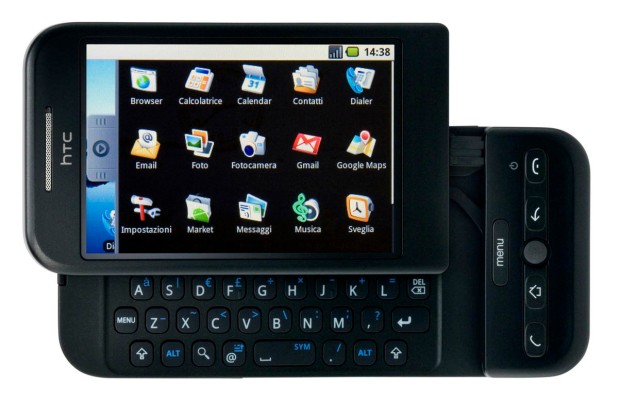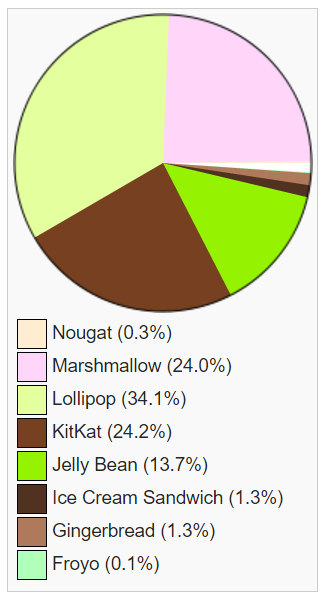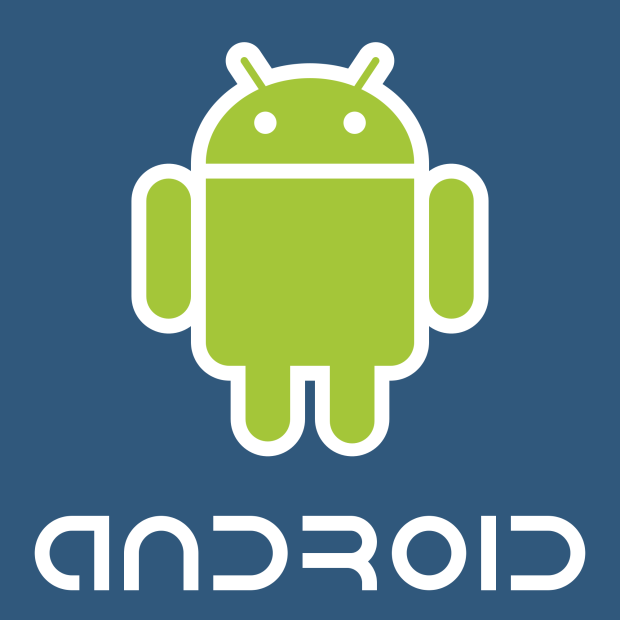The truth of Android
( Visit my wordpress site for more intresting stuffs.)
The most popular Operating System for mobiles at the moment is Android, which was launched by Google way back in 2008. Android is an open source operating system written in Linux and basically designed for smartphones and tablets. It was launched during the period when Apples’s iOS was at the helm of the OS for mobiles market. Initially Android OS didn’t create any ruckus in the mobile world but it started to grow gradually. Android was developed by Android Inc. which was later bought by Google in 2005. The first Android based smartphone was HTC Dream which was launched in 2008. As the OS is open-source, it allows the developers to play with the code allowing them to modify the code as per their needs. At present Android has one of the largest community of Application Developers writing and developing large number of applications that extend the functionality of the device. Google has launched different versions of Android till now and the interesting fact to be noticed in these versions is that most of the names of OS are named after desserts and the names are in alphabetical order such as Cupcake, Donut, Eclair, Froyo, Gingerbread, Honeycomb, Ice Cream Sandwich and now Jelly Bean. The first two versions were not given any name and just simply referred as Android 1.0 and Android 1.1 and from Android 1.5 specific names were assigned to the OS. Besides these versions, many incremental updates were launched on top of these OS to fix the bugs etc.
Lets see some cool facts about it and see how it was evolved…
THE FIRST ANDROID PHONE: HTC DREAM

OVERVIEW:
 | |

Android 7.0 Nougat (with some Google apps)
| |
| DEVELOPER | |
|---|---|
| WRITTEN IN | Java (UI), C (core), C++ |
| OS FAMILY | Unix-like |
| WORKING STATE | Current |
| SOURCE MODEL | Open source and in most devices with proprietary components |
| INITIAL RELEASE | September 23, 2008 |
| LATEST RELEASE | Android 7.1 Nougat / October 4, 2016 |
| MARKETING TARGET | Smartphones, tablet computers, Android TV, Android Auto and Android Wear |
| AVAILABLE IN | 100+ languages |
| PACKAGE MANAGER | APK (through Google Play) |
| PLATFORMS | 32- and 64-bit ARM, x86, MIPS and MIPS64 |
| KERNELTYPE | Monolithic (modified Linux kernel) |
| USERLAND | Bionic libc, mksh shell, Toybox as core utilities beginning with Android 6.0, previously native core utilities with a few from NetBSD |
| DEFAULT USER INTERFACE | Graphical (multi-touch) |
| LICENSE | Apache License 2.0 GNU GPL v2 for the Linux kernel modifications |
| OFFICIAL WEBSITE | android.com |
(Source: http://www.wikipedia.com)
PLATFORM VERSIONS DISTRIBUTION:

Charts in this section provide breakdowns of Android versions, based on devices accessing the Google Play Store in a seven-day period ending on November 7, 2016.
Therefore, these statistics exclude devices running various Android forks that do not access the Google Play Store, such as Amazon’s Fire tablets.
| VERSION | CODE NAME | RELEASE DATE | API LEVEL | DVM/ART | DISTRIBUTION | FIRST DEVICES TO RUN VERSION |
|---|---|---|---|---|---|---|
| 7.1 | Nougat | October 4, 2016 | 25 | ART | less than 0.1% | |
| 7.0 | Nougat | August 22, 2016 | 24 | ART | 0.3% | Nexus 5X, Nexus 6P |
| 6.0 | Marshmallow | October 5, 2015 | 23 | ART | 24.0% | Nexus 5X, Nexus 6P |
| 5.1 | Lollipop | March 9, 2015 | 22 | ART | 22.8% | Android One |
| 5.0 | November 3, 2014 | 21 | ART 2.1.0 | 11.3% | Nexus 6 | |
| 4.4 | KitKat | October 31, 2013 | 19 | DVM (and ART 1.6.0) | 25.2% | Nexus 5 |
| 4.3 | Jelly Bean | July 24, 2013 | 18 | DVM | 2.0% | Nexus 7 2013 |
| 4.2 | November 13, 2012 | 17 | DVM | 6.8% | Nexus 4, Nexus 10 | |
| 4.1 | July 9, 2012 | 16 | DVM | 4.9% | Nexus 7 | |
| 4.0 | Ice Cream Sandwich | December 16, 2011 | 15 | DVM | 1.3% | Galaxy Nexus |
| 2.3.3+ | Gingerbread | February 9, 2011 | 10 | DVM 1.4.0 | 1.3% | Nexus S |
| 2.2 | Froyo | May 20, 2010 | 8 | DVM | 0.1% | Droid 2 |
Since May 2016, more than half of devices have OpenGL ES 3.0 or higher.
(source: http://www.wikipedia.com)
THE ANDROID LOGO:

The green Android logo was designed by graphic designer Irina Blok for Google in 2007. The design team was tasked with a project to create a universally identifiable icon with the specific inclusion of a robot in the final design. After numerous design developments based on science fiction and space movies, the team eventually sought inspiration from the human symbol on restroom doors and modified the figure into a robot shape. As Android is open-sourced, it was agreed that the logo should be likewise, and since its launch the green logo has been reinterpreted into countless variations on the original design.
Irina Blok,the creator
“While working for Google I created this little green dude as part of the launch campaign. The idea was to create the open source logo (very much like open source Android platform), that was released to the developer community without regular brand guidelines. Not unlike Linux Penguin, the logo helped to establish identity for the new product and generated excitement among engineers. Initially the logo was meant for developer community, but it quickly became consumer facing with millions of people creating their own versions of the logo every day.”
EVOLUTION:

Credit: XCUBELABS

Comments
Post a Comment